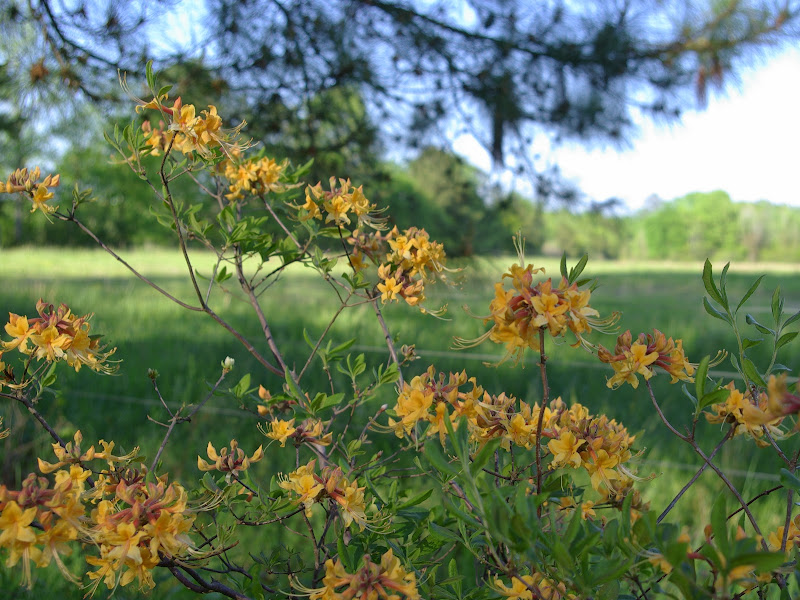This is the time of the year that the natives start spreading their wings. And the time for some long-awaited friends to make a reappearance.
Toothwort used to bloom with joyful abandon at the old house site, but since then, it has been much more shy to bloom. Still, this has been a good year for it, and this spring I have been finding the delicate white blooms in all sorts of out-of-the-way shady places, where I had tucked spare rhizomes years ago.
Of the four Florida azaleas that used to be at the front of the house, three survived. The one below has scarcely missed a beat, blooming every year since. It's a nice size ~ about 4 high and 3 feet wide ~ and covered in flowers.
The other two I have waited SIX long years to see a bloom again. They've been residing on the east side of the house for the past two or three years now, after it became clear they wouldn't make it if they stayed where they were. I was so happy to see flowers on them again!
Ironically the Florida Azalea that's doing the best is one that I put at the edge of the woods opposite the paddock behind the house. It's taller than me now. The deer haven't touched it. I have heard from others that deer much prefer the evergreen azaleas and this tallies with my experience.
I thought the only woodland phlox I had left was the medium blue ('Clouds of Perfume'), but there's some purple 'Louisiana' left after all. The very light blue/ white 'May Breeze' is gorgeous but isn't as tough as the others and it's gone now. We've had a lot of dry, dry summers in recent years and woodland phlox doesn't appreciate that. I'm going to keep mulching my little shade garden next to the house, though, as I don't have that much shade anymore where I'm willing to micromanage things.
Every year when the Piedmont azaleas bloom I wish all of my garden was like this.
The bright rose/purple azalea on the right is an Encore 'Autumn Amethyst'.
The native crabapples were magnificent this year, as usual. We have three: one at the edge of a field, one next to a path that leads to the creek, and one next to the creek. This is the first year I've seen many flowers on the pathside tree, and it was beautiful.
This one next to the creek was also covered in flowers, almost surprisingly so considering how many other trees are growing around it.
Thank you Gail for hosting Wildflower Wednesday!




















































